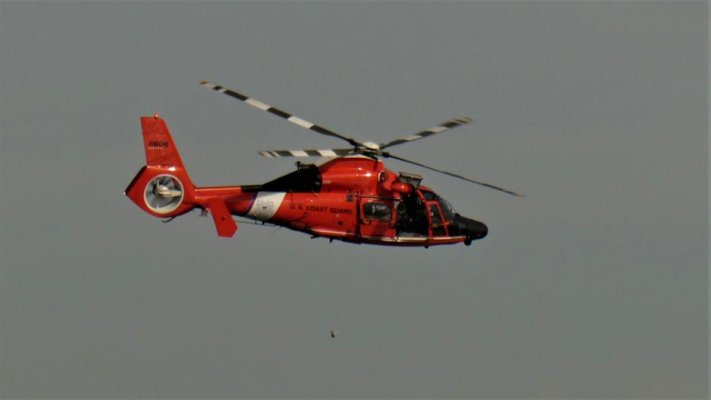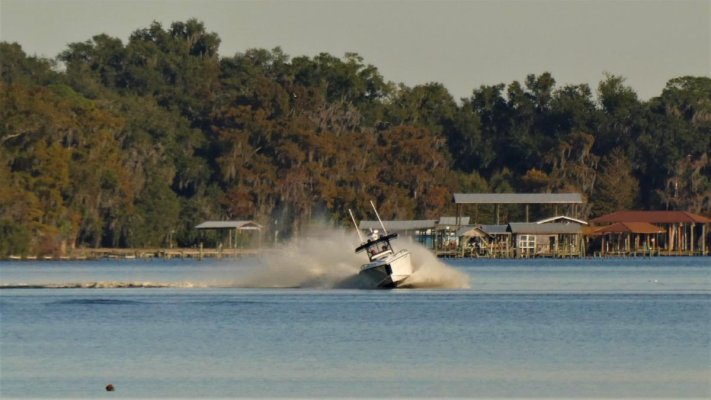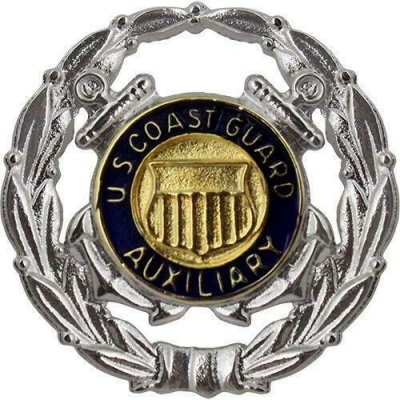Don, you seem to be well versed on the CG Aux. I have seen there boats occasionally and noticed no uniform ranks or rates, I assume however owns the boat is in charge. But assuming who is in charge and chain of command usually doesn’t work well in emergency situations. Can you advise what structure the CG Aux uses ? Also because it’s a volunteer group does the CG compensate the boat owner for fuel and maintenance while on patrols?
Interpreting 'who's who' in the CGAUX is difficult 'from the outside looking in'. I'll cite a number of facts that you must digest to make sense of it.
1st - CG Auxiliary employs a "chain of leadership" instead of a "chain of command". 'Rank' is not as powerfully authoritative as it is in active duty.
2nd - CG Auxiliarists earn 'officer' ranks: e.g. Ensign (Flotilla Staff Officer), Lt JG (Flotilla Vice-Commander), Lt (Flotilla Commander), Lt Cmdr (Division Vice Commander), Cmdr (Division Commander), Captain (District Captain), Commodore, etc. by being elected to positions of increasing administrative responsibility. Such devices are not generally worn on Operational Dress Uniforms (ODUs), lest they confuse young non-commissioned Coasties, especially when participating in On-The-Water (OTW) Operations.
3rd - Many organizations have come to recognize that members progress either: through managerial, or, technical career tracks. In this context, CGAUX awards Offices (analogous to ranks) that are qualified by color coded insignia, intended to distinguish 'elected' versus 'appointed' offices. Elected Officers swing a politically heavier bat than appointed officers, of course.
4th - Some highly experienced/talented Executives/Professionals join CGAUX to refine OTW skills yet hoping to avoid the administrative/managerial duties they're retiring from. Conversely, some minimally accomplished people join CGAUX to acquire and exercise authority they've dreamed of. Therefore, rank is not automatically indicative of skill, intelligence or authority.
5th - Boat Crews are easier to understand because they are limited in size and the mission demands it. The Coxswain (wearing crossed oars over the left breast - see photo) is in command, regardless of the offices/ranks of other persons on board (POB). The Cox'n may or may not be the boat owner. A boat owner may terminate the mission at any time but yields operational control to the Cox'n at all times. Uncommonly, Active Duty may wear a Surfman's device, and an Auxiliarist may wear a Trident in place of the Coxswain Device.
6th - The OIA (Order Issuing Authority, which is typically the local Small Boat Station) in concert with CGAUX 'Operations' chain of leadership will typically match Cox'ns skills/experience to mission requirements.
7th - Until recently another reliable means of identifying senior expertise in boat crews was to observe an AUXOP device over the Name tape on the right breast (see photo). This device signified completion of training in Seamanship, Weather, Patrol Management, Communications, Advanced Coastal Navigation and Search And Rescue. However, CGAUX has reduced requirements, and offered alternative electives, to permit various Auxiliarists to earn & wear the elite badge previously indicating mastery of all Surface Operator skills. Consequently, the AUXOP device is no longer a reliable indication of expertise or capabilities.
8th - When encountering a CGAUX OPFAC, the Cox'n likely will have appointed a crewman as the 'talker', for training or skills maintenance purposes, and also because the Cox'n persistently attempts to maintain situational awareness (of all crew, traffic, instruments, etc.). More than one person communicating can be confusing. There is nothing wrong with someone asking "who is the coxswain"?
9th - Fuel reimbursement, solely for patrol hours/miles, must be justified by credible receipts. Frugal allowances for meals and boat maintenance, are computed and awarded based on clock time and horsepower.
Auxiliary membership is generally very gratifying but infrequently depressing when Rescues evolve into Recoveries. Teaming with retired: combat helicopter pilots (
incredible dexterity!), USN Commanders of DDG 51 Destroyers & Aircraft Carriers and the
thoroughly professional mariners graduated from our Merchant Marine Academies has enriched my boating knowledge and skills more than I imagined. The voice you hear on VHF 16 is very often an Auxiliarist relieving active duty personnel.
Years ago, CGAUX senior surface operators were awarded greater responsibility/authority based on demonstrating their ability to competently operate more than a dozen different kinds of boats. Although this standard is long forgotten, Qualification Examiners (QEs) regularly confirm that "our best surface operators are those who entered training with extensive recreational boating backgrounds". The flip side is that CGAUX is increasingly governed by the US Government's ever expanding political correctness. which may be demotivating.
I hope the foregoing fulfills your curiosity.
Semper Paratus,
Don







